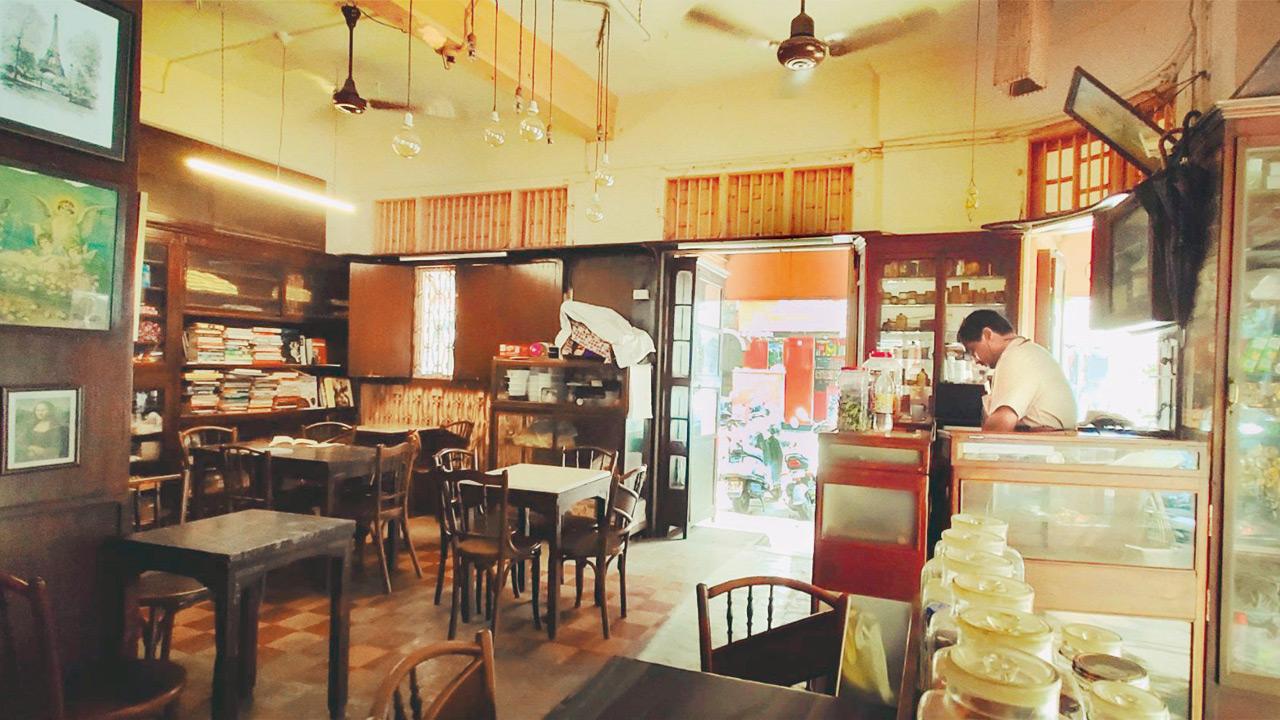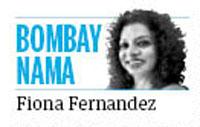As Lucknow makes a strong pitch to earn the tag of UNESCO Creative City of Gastronomy, now is a good time to look closer home, if our own city can stake a claim when it comes to culinary heritage

Cafe de la Paix is a heritage Irani cafe near Opera House. Pic/Fiona Fernandez
 The first time that I was truly exposed to the sheer variety and diversity of Lucknow’s culinary spread was at a friend’s wedding in the city. It was a treat for the palate, to put in mildly. The live counters whipped up everything from varieties of kebabs and chaat, to regal Awadhi delicacies. There was the flavour-packed Lakhnawi biryani, and yes, desserts like Shahi tukda and Kali gajar ka halwa. Later, on that same trip, we went berserk savouring their street fare, including the famous sheermal from Rahim’s and other pokey eateries in Kaiserbagh.
The first time that I was truly exposed to the sheer variety and diversity of Lucknow’s culinary spread was at a friend’s wedding in the city. It was a treat for the palate, to put in mildly. The live counters whipped up everything from varieties of kebabs and chaat, to regal Awadhi delicacies. There was the flavour-packed Lakhnawi biryani, and yes, desserts like Shahi tukda and Kali gajar ka halwa. Later, on that same trip, we went berserk savouring their street fare, including the famous sheermal from Rahim’s and other pokey eateries in Kaiserbagh.
If you’re wondering why I’ve possibly whetted your appetite on a Monday morning with this little culinary tribute to Lucknow, it’s because the city has recently been in the news with its pitch to earn a UNESCO honour as a Creative City of Gastronomy. Work is in full swing, and multi-award-winning conservation architect Abha Narain Lambah and her team are at the helm of this dossier, to ensure that the City of Nawabs gets its due. In the course of that conservation with Narain Lambah and insight into their proposal that was submitted to the world body, which appeared in this newspaper in edition dated June 13, 2025, she revealed several facets that gave Lucknow a strong advantage. From street fare to biryanis, their world-famous chaats, home recipes, royal Awadhi fare and their desserts all, and well-balanced vegetarian and non-vegetarian food, “it was a beautiful amalgamation,” to quote from that conversation.
All that talk made one think of Mumbai’s culinary heritage. For the sake of a conversation, I decided to look at some of the key contenders to showcase our city’s homegrown culinary heritage. The first suggestion that comes to mind is the Koli community. They are the city’s OG inhabitants, and their cuisine is a wonderful celebration of the city’s love affair with the sea since it was a cluster of seven islands. Koli cuisine, sadly, remains terribly underrepresented in the city, despite the sporadic push to support Koliwada fare by civic authorities and the smattering of eateries. Too few for a city that Kolis consider their home. A sustained effort by offering support to Koli F&B entrepreneurs to showcase their fare, could catapult their unique cuisine into the spotlight and provide a much-needed thrust towards elevating their cuisine, making it more accessible to Bombaywallahs and tourists alike. On the contrary, Koliwadas are facing an existential crisis in their home city. To deep-dive into those issues would require column space panning several columns of Bombayana. The underlying fact remains that Koli cuisine ought to get its due beyond the odd ‘Koli seafood festival’ or weekend kiosks that spring up for an occasional feel-good factor of a community that remains on the fringes of the city, fighting hard to protect their Koliwadas. The Mahim Seafood Plaza that operates on weekends seems to be the only feeble effort towards showcasing the cuisine.
Another strong contender, I feel, could be the unique Irani fare and the institution of the Irani café that was birthed in our city. It’s a hat-tip to an enterprising community who arrived her, mostly from Gujarat, and made the city their own, to give us a truly special cuisine that isn’t found elsewhere in this original avatar. A few remain in Pune and a very popular chain is run in London by Bombaywallahs. However, it is Mumbai that has truly been the heart of this culinary culture for over a century. Unless you’ve been living under a rock, you would not have tasted their Berry pulao or Mutton dhansak, and relished the Kheema pao and Mawa cake.
Despite dwindling numbers, the Irani café continues to have its loyal patrons and is a must-visit on the culinary map for visitors to the city. However, plenty needs to be done in terms of promoting these fantastic ambassadors of the city’s diverse culinary heritage. Civic authorities ought to allow them to just ‘be’; land sharks in particular, have played villain in the mix and that threat remains. It will be a shame for the city, if these charming epicentres of Mumbai’s cultural cosmopolitanism get silently phased out.
The Kolis and the Irani-Zoroastrians are just two examples of rich culinary legacies that deserve support from a socio-economic perspective. Like Lucknow, Mumbai is a melting pot of cultures, blessed with the coming together of several cuisines since ancient times. From the Pathare Prabhus to the Bhandaris, to the East Indians, we have so many indigenous communities that boast of culinary traditions; yet somehow, their cuisines remain unrepresented [or even lost] in their home city. A shame, given our claim to being a world-class city for food and drink establishments. Representation of local communities cannot be forgotten in this heady race. Asian cities like Bangkok, Singapore or Phnom Penh highlight their local and global fare with equal importance. Mumbai lacks that balance. Until that ratio is rectified, we have a long way to go when it comes to making a pitch as a UNESCO Creative City for Gastronomy.
mid-day’s Features Editor Fiona Fernandez relishes the city’s sights, sounds, smells and stones...wherever the ink and the inclination takes her.
She tweets @bombayana. Send your feedback to mailbag@mid-day.com
 Subscribe today by clicking the link and stay updated with the latest news!" Click here!
Subscribe today by clicking the link and stay updated with the latest news!" Click here!










